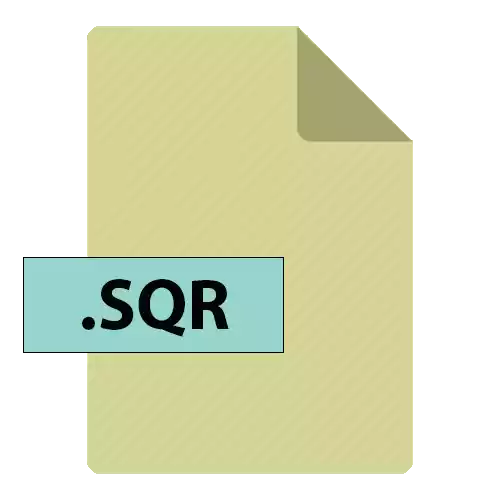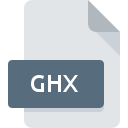.SQR File Extension

SQL Program File
| Developer | N/A |
| Popularity | |
| Category | Data Files |
| Format | .SQR |
| Cross Platform | Update Soon |
What is an SQR file?
.SQR files are associated with Structured Query Report (SQR) programming language. These files store source code written in the SQR language, used for generating formatted reports from databases.
They primarily contain commands, variables, and logic to retrieve, manipulate, and display data in a specified format.
More Information.
Initially, .SQR files were designed to generate reports from Oracle databases. Over time, its use expanded to other databases due to its versatility and cross-platform compatibility. It gained popularity for its ability to handle complex reporting requirements efficiently.
Origin Of This File.
The .SQR file format was developed by SQRIBE Technologies in the late 1980s as a language specifically designed for report generation. It was intended to provide a flexible, powerful, and database-independent solution for creating reports from various data sources.
File Structure Technical Specification.
.SQR files contain human-readable code written in the SQR programming language. They consist of commands, SQL queries, control structures, and formatting instructions.
These files typically have a “.SQR” extension and can be opened and edited using text editors or specialized SQR development environments.
The structure of an .SQR file involves sections for declaring variables, defining SQL queries, implementing program logic, and formatting output.
How to Convert the File?
Windows:
- Generate Reports: Use Oracle’s PeopleSoft Enterprise software suite or related tools compatible with Windows to execute the .SQR file, generating reports from databases as specified in the code.
- Compile SQR Code: Utilize SQR-specific compilers available for Windows to compile the .SQR file into an executable format, allowing the code to be run independently to produce reports.
Linux:
- Database Tools: Employ database management tools compatible with Linux, such as Oracle SQL Developer or related software, to execute the .SQR file for generating reports or manipulating database data.
- Text Editors/IDEs: Use text editors or integrated development environments (IDEs) compatible with Linux to access and modify the .SQR file content, executing the code within for report generation.
Mac:
- Database Management Tools: Utilize Oracle SQL Developer or other database management software compatible with Mac systems to execute the .SQR file for report generation or database-related tasks.
- Text Editors/IDEs: Similar to Linux, use text editors like TextEdit, BBEdit, Visual Studio Code, or integrated development environments compatible with Mac to access and manipulate the content of .SQR files for intended purposes.
Android:
- Code Editor Apps: Use code editor apps available on the Google Play Store like Dcoder, AIDE, Quoda, or similar apps.
- Access and Modify: Open the .SQR file within the code editor app to access the SQR code content. You can review, modify, or use the code for database-related tasks.
- Executing Code: While you may not directly execute .SQR files on Android, these code editor apps allow you to interact with the code, making modifications or using it within a compatible environment to perform database-related actions.
iOS:
- Cloud-Based Code Editors: Utilize cloud-based code editor apps available on the App Store, such as Textastic or Koder.
- Access .SQR Files: Use these apps to access .SQR files stored in cloud services like iCloud or Dropbox.
- Review and Modify: Open the .SQR file within the cloud-based code editor to review, modify, or use the SQR code for database-related tasks.
- Limited Execution: Direct execution of .SQR files on iOS might be limited due to the specialized nature of the SQR language. However, these apps allow for manipulation and utilization of the code within the files.
Advantages And Disadvantages.
Advantages:
- Versatility in generating reports from diverse databases.
- Capable of handling complex reporting requirements.
- Human-readable code allows for easy debugging and modification.
- Cross-platform compatibility.
Disadvantages:
- The steeper learning curve for beginners is due to its specific syntax.
- Limited availability of specialized tools for SQR development.
- Maintenance can be challenging for large, intricate reports.
How to Open SQR?
Open In Windows
- Viewing: Use text editors like Notepad++, Sublime Text, or Visual Studio Code to view and edit .SQR files.
- Executing: To execute an SQR script on Windows, you need an SQR interpreter or a compatible database reporting tool. This often comes as part of the software package provided by database systems like Oracle or PeopleSoft.
Open In Linux
- Viewing: Linux offers a variety of text editors like Gedit, Vim, or Emacs for opening and editing .SQR files.
- Executing: Similar to Windows, you require an SQR interpreter or compatible environment. Linux users often need to install these tools through their distribution’s package manager or directly from the software provider.
Open In MAC
- Viewing: Mac users can use built-in text editors like TextEdit or third-party options like Atom and BBEdit for .SQR files.
- Executing: Executing SQR scripts on macOS requires an appropriate SQR processing environment. This might involve installing software from Oracle or other database providers that support SQR.
Open In Android
- Viewing: Android doesn’t natively support SQR files, but you can view them using code editor apps available on the Google Play Store.
- Executing: Android devices typically do not support the execution of SQR scripts due to their reliance on desktop database systems and specific environments.
Open In IOS
- Viewing: On iOS devices, .SQR files can be opened with text or code editor apps available in the App Store.
- Executing: Like Android, iOS does not support the execution of .SQR files. These scripts are intended for desktop or server environments.
Open in Others
For other platforms or specialized systems, accessing .SQR files may require text editors or integrated development environments supporting the SQR language syntax.
Online code editors or specialized software solutions designed for SQR development might facilitate access to .SQR files on different platforms.










